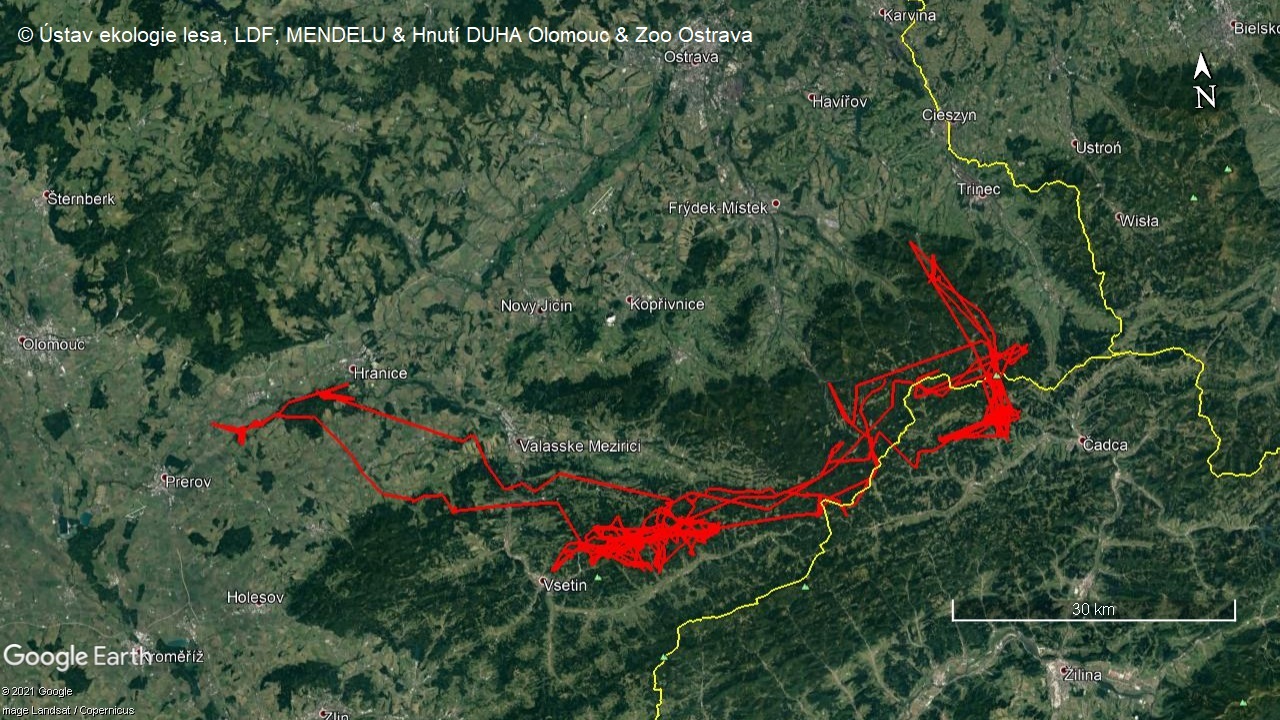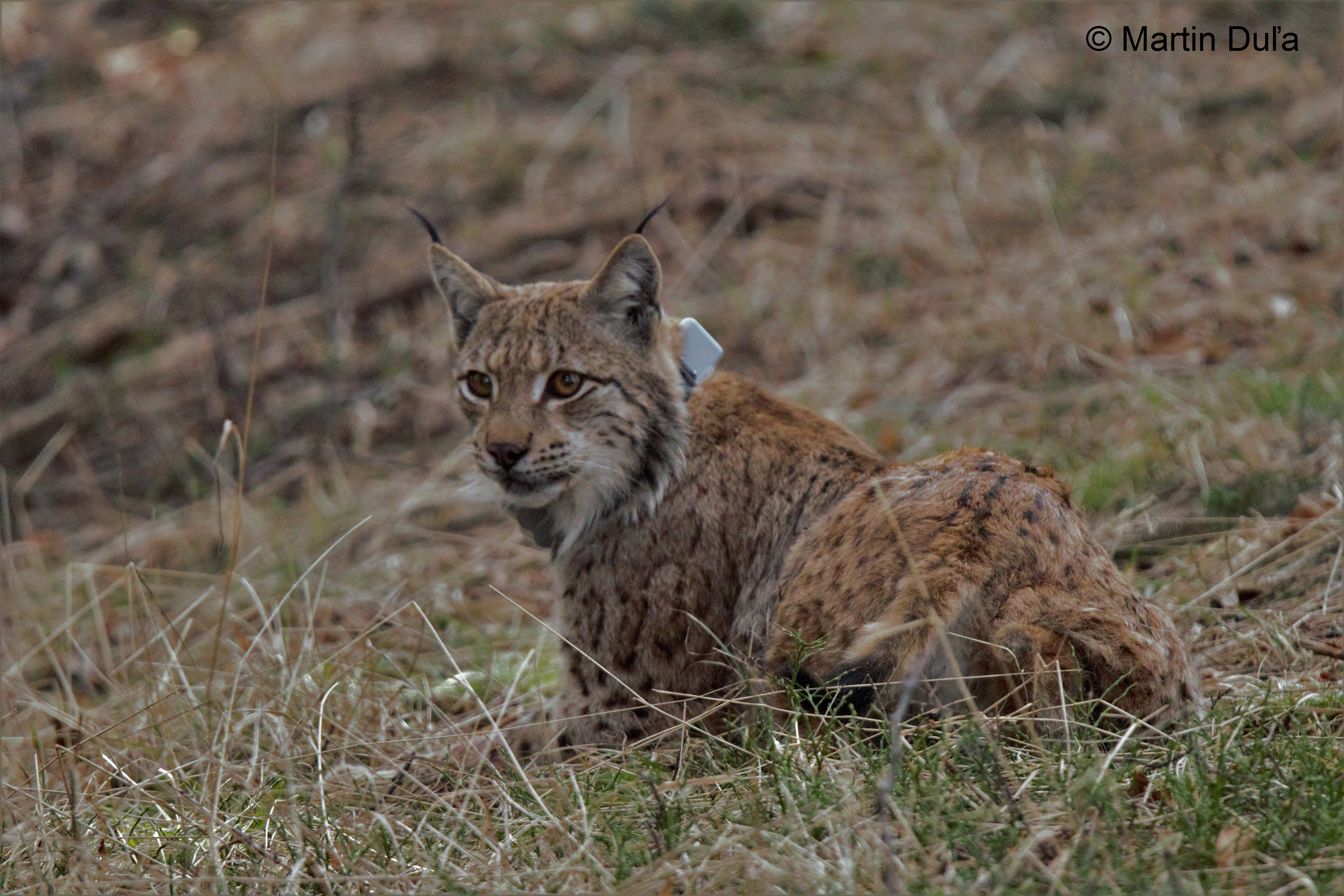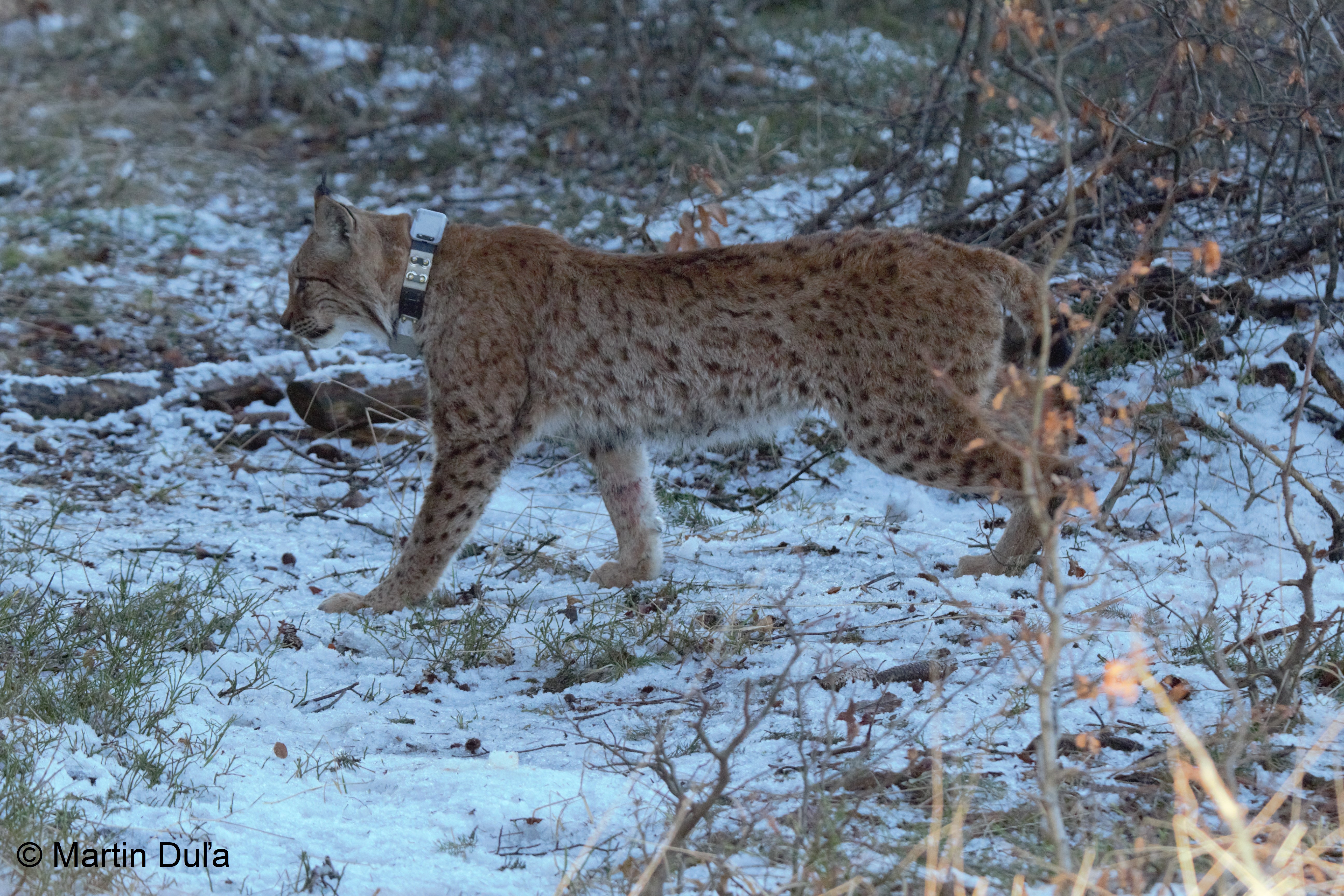SaveGREEN - Monitoring lynx in the Beskydy Mountains
28-05-2021
HOPING TO MAP IMPORTANT WILDLIFE corridors used by large carnivores and other animals, researchers from Mendel University in Brno have been fitting satellite tracking collars to five male lynx during the past year. The aim is simple, yet crucial: via this intensive telemetric monitoring, the data obtained will help achieve a more consistent protection of these large carnivores, as well as be used to preserve landscape permeability — currently, largely diminished by building development and roads construction.
“GPS telemetry is one of the basic tools for effective study and protection of many animal species. In addition to defining critical points in terms of transport infrastructure and mapping key wildlife corridors, we will also focus on the feeding ecology and interactions of lynx within and between species. We are sure that the data we will obtain will be beneficial for further research and protection of the Eurasian lynx both at the national and international level,” said Martin Duľa, a zoologist from the Institute of Forest Ecology at Mendel University in Brno and leader of the capture team.
The current five lynx being monitored were fitted with their tracking collars in the central part of the Moravian-Silesian Beskydy, a mountain range in the Czech Republic with a small part reaching to Slovakia, lying in the historical division between Moravia and Silesia. This intensive telemetric monitoring is part of the activities of the SaveGREEN project, represented in Czech Republic by partner Hnutí DUHA Olomouc.
A lynx’s journey from the Olomouc region to the Slovak Kysuce
In spring 2020, Eman was the first animal fitted with the tracking collar: a one-year-old male caught shortly after separating from its mother. The young male, still searching for a territory of its own, moves in a large area encompassing Lipník nad Bečvou through the Hostýn Hills, Vsetín and from the Moravian-Silesian Beskydy mountain range to the Slovak Kysuce. Its telemetry tracking collar was provided by the Ostrava Zoo, which cooperates for the protection of the wild lynx since 2018. “The protection of animals in their natural habitats and, of course, the preservation of habitats themselves are extremely important. For the conservation efforts to be truly effective, we need to know as much as possible about the protected animals' way of life,” said Jiří Novák, director of the Ostrava Zoo.

Monitoring through satellite telemetry has allowed registering Eman’s movements, giving a better picture of ecological corridors encompassing Lipník nad Bečvou through the Hostýn Hills, Vsetín and from the Moravian-Silesian Beskydy mountain range to the Slovak Kysuce.
Furthermore, during 2021’s mating season, four more lynx were captured and equipped with a tracking collar. Three of them were young males in their second year of life; the fourth, a five-year-old resident lynx. This provides an opportunity to map in great detail the space requirements of rare carnivores at the edge of their occurrence in the Carpathians.
The long-distance dispersal of large carnivores in our landscape becomes more and more difficult with the rapid development and increasing intensity of car traffic, as evidenced by recent cases of lynx and wolves killed on the roads. “The connectivity of mountain ranges is important for the survival of large carnivore populations. Young animals searching for new territory often need to cross densely populated areas at the foothills. Telemetric monitoring of several individuals at the same time gives us a great opportunity to find out which passages are still available for large carnivores in the Beskydy area and where, on the other hand, the landscape connectivity needs improving,” said Michal Bojda, field worker of Hnutí DUHA Olomouc and researcher at the Mendel University in Brno.


Left to right: Radio-monitored lynx males Lukáš (check out footage of him and his prey in this YouTube link) and Vendelín. Photos: Martin Duľa.
“The Eurasian lynx leads a secretive life, so the data on its movements through the landscape can help us significantly in its protection. Maintaining and improving landscape connectivity will benefit not only lynx but other animals as well. Unfortunately, the transport infrastructure is not the only threat for the lynx in the Beskydy Mountains; poaching also remains a major problem,” stated František Jaskula from the Nature Conservation Agency of the Czech Republic, head of the Beskydy Protected Landscape Area Administration.
The tracking collars used for the telemetric monitoring are pre-set for a certain period. Therefore, the animals do not have to be recaptured to remove the tracking device. “All five lynx are in good condition and successfully hunting. After a certain time, the collar will automatically open and fall off,” concluded Duľa.
Telemetry will also provide valuable information for the international SaveGREEN project
 Wildlife road deaths are one of the consequences of declining landscape permeability, but the isolation of fragile populations represents an even greater risk. It can reduce the reproductive success of key species and, thus, threaten the viability of entire ecosystems. The SaveGREEN project focuses on this problem in the Carpathians and Danube region. It aims to promote the best solutions for the protection of ecological corridors. Within the project, Hnutí DUHA Olomouc (Friends of the Earth Czech Republic) wants to develop, among other things, examples of good practices for the protection of landscape permeability in the Beskydy-Kysuce pilot area (CZ-SK). The experience can then be transferred to other areas of the Czech Republic.
Wildlife road deaths are one of the consequences of declining landscape permeability, but the isolation of fragile populations represents an even greater risk. It can reduce the reproductive success of key species and, thus, threaten the viability of entire ecosystems. The SaveGREEN project focuses on this problem in the Carpathians and Danube region. It aims to promote the best solutions for the protection of ecological corridors. Within the project, Hnutí DUHA Olomouc (Friends of the Earth Czech Republic) wants to develop, among other things, examples of good practices for the protection of landscape permeability in the Beskydy-Kysuce pilot area (CZ-SK). The experience can then be transferred to other areas of the Czech Republic.
*****
The successful capture and telemetric monitoring of lynx in the Beskydy Mountains would not have been possible without the cooperation of many institutions and individuals. We would like to thank the Zvolen National Forestry Centre, the Frýdek-Místek District Forest Administration and local hunting grounds managements, the Nature Conservation Agency of the Czech Republic, and the veterinarians involved in the capture.
*****
Contacts:
Martin Duľa, Department of Forest Ecology, Faculty of Forestry and Wood Technology, Mendel University in Brno, martin.dula@mendelu.cz
Michal Bojda, Hnutí DUHA Olomouc (Friends of the Earth Czech Republic and Department of Forest Ecology, Faculty of Forestry and Wood Technology, Mendel University in Brno, michal.bojda@hnutiduha.cz
Šárka Nováková, a spokeswoman of the Ostrava Zoo, novakova@zoo-ostrava.cz
